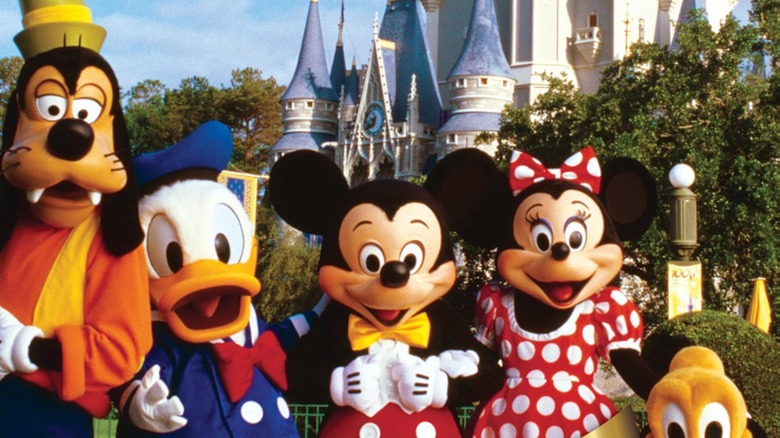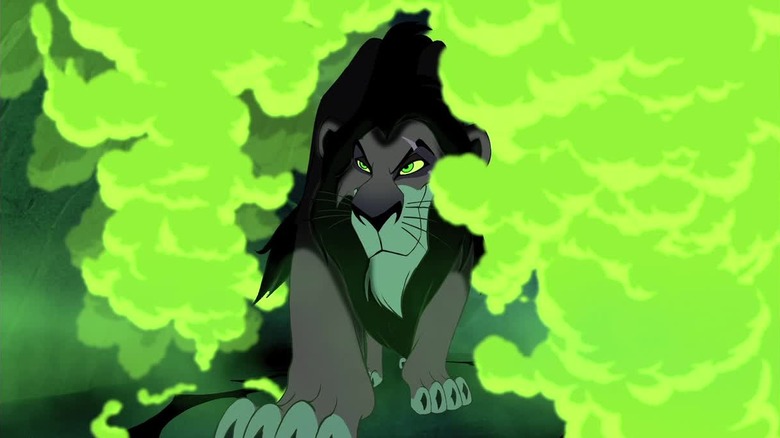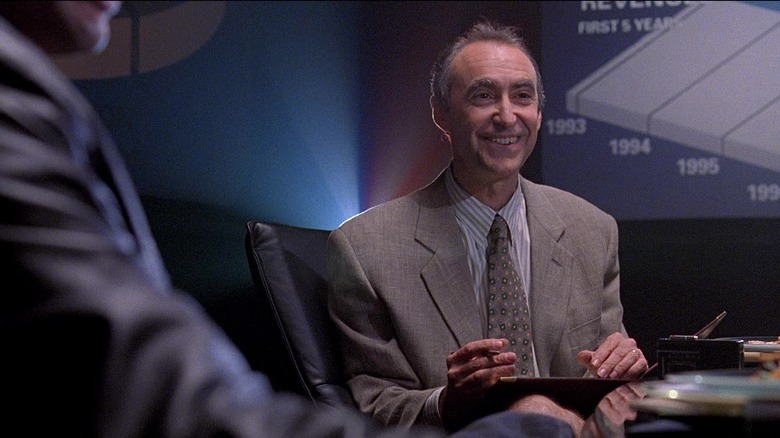Disney's New Theme Park Pass Finds A New Way To Charge An Arm And A Leg
It is an undeniable reality that to visit the continental Disney theme parks, you will have to prepare yourself to pay a lot of money. Unless you're local to either Anaheim or Orlando, you'll have to pay for a hotel, food, the cost of driving (whether with your own car or a rental), parking, merchandise ... and, oh, yes, the actual tickets themselves. Disney, for a long time, also allowed guests to jump to the front of the line in various ways, a benefit that used to be free. Ah, but the Disney Parks world is one of change and change costs money. What was once known as the free FastPass system is now called the Lightning Lane system, wherein guests use their phones to select a ride they want to experience and identify their preferred return time, at which point they'd skip past a potentially long line and enjoy themselves. Lightning Lanes have been around for a few years and they've required guests to drop some money, but as of the end of this month, you can get ready to lighten your wallet even more with the Lightning Lane Premier Pass.
The Lightning Lane Premier Pass is arriving very soon at both Disneyland and Walt Disney World; at Disneyland, the new pass will be available a week from today, October 23, and at Walt Disney World, it's coming in just two weeks, on October 30. Although Disney is careful to note that this is a pilot program with limited capacity, the numbers are eye-popping enough to grab headlines, because while the benefits of the pass are enticing, the cost is the exact opposite. At Disneyland, if you're flush with cash and impatient to ride Indiana Jones Adventure or the like, you can spend $400 per person between October 23 and the end of 2024 to get the pass. At Walt Disney World, though, the cost is much more variable, based on which park you choose to use your pass in. At Disney's Animal Kingdom, the price range is from $129-$199 per person, whereas at the Magic Kingdom, it's $329-$449 per person. No matter which coast you're on, the pass is good for one Lightning Lane (AKA one option to skip the line) per ride, per day.
Now, if those numbers aren't wild enough, let's do two quick experiments to see if the headline in the link above — noting that the Lightning Lane Premier Pass costs more than your actual admission — is true. At Disneyland, if you wanted to enjoy the holiday decorations in mid-November, to get a Park Hopper ticket for a single day, enabling you to go to either Disneyland Park or Disney California Adventure, that would cost one adult $271. So in that case .. well, yes, you'd end up spending almost $700 to visit two theme parks and ensure that you don't get stuck in a lot of lines. Over in Orlando, if you decide to splurge for the Premier Pass at Disney's Animal Kingdom in mid-November, the cost will be right around equal if not more, because a single-day ticket to that park would cost $149 per person. If you can manage to pick your jaw off the floor, let's dive into the issue.
Be prepared for longer waits
At least for now, the Lightning Lane Premier Pass is targeted at the wealthy and super-wealthy, not just because of the price point but because of its location. For example, although this will be available at Walt Disney World right before Halloween, it will only be available to anyone staying at the Deluxe or Villa-level resort hotels, so if you're staying at one of the cheaper options, or staying off-site, the pass won't be available. (Honestly, you can consider that a relief, because it's one less thing to spend on.) And we can technically take it as a good sign that Disney is loudly calling this a pilot program, because not all pilot programs become reality. But the larger reality is that Disney's main rival in the theme park business, Universal, has its own version of the Premier Pass, called the Express Pass, and it's had it for over a decade. In some ways, it's almost miraculous that Disney hadn't enacted a Premier Pass before now, simply because of how common it is elsewhere.
But that doesn't make this new add-on acceptable, even if it becomes the new normal. A trip to the Disney theme parks being expensive should not come as a great surprise to outside observers, let alone those of us who follow the park news or visit multiple times of year, but that doesn't make it reasonable. One of the many wonderful aspects of the Disney theme park experience is that there can be something for just about everyone. Unlike at a Universal theme park or Six Flags, all of the attractions aren't heavy on thrills or intensity. You can meet characters from 100 years' worth of movies, you can take brief rides through three-dimensional spaces meant to approximate the most beloved animated or live-action films, you can watch fireworks, or you can stuff your face with a turkey leg or four. But to do most of those things (yes, even the character greetings at Walt Disney World now), you have to stand in lines which are going to get only more painful by allowing people to skip to the front of the line and get priority over the unwashed masses.
Call it a coupon day
Over 30 years ago, Steven Spielberg's excellent and iconic "Jurassic Park" wound up being a lot more forward-thinking than even he or the original book's author, Michael Crichton, could have realized. No, Disney hasn't gotten to the point of reviving extinct species, but what it has done is attempt to create experiences that cost exorbitant amounts of money — experiences seemingly driven by a suite of executives desperate to squeeze as much cash out of their fanbase as humanly possible. In "Jurassic Park," an early scene before all the dinosaurs start attacking depicts the various parties, from a botanist to a mathematician to the park owner, debating the ethics of cloning dinosaurs, while a greedy lawyer notes that they can charge whatever amount they want for attendance. When John Hammond brusquely notes that he wants anyone to be able to attend the park, the lawyer snidely says, "Sure, we'll have a ... a coupon day."
The arrival of the Lightning Lane Premier Pass feels like one more step for Disney to fully embrace being like the lawyer from "Jurassic Park." During the brief and painful Bob Chapek era at Disney, he pushed for the Genie+ system, whose branding was a confusing headache but whose DNA still remains. Genie+ and the now-defunct FastPass+ were each ways to charge people to skip the line, which had previously been a free option for anyone with the original, paper FastPasses. Now, to effectively get the most of out of your time at either Disneyland or Walt Disney World, you not only have to rely on your smartphone (because all Lightning Lane passes are digital, and you have to request new passes for specific rides via the theme-park apps), but you have to rely on spending a lot more money just to ensure you're not in hourlong lines to fly with Peter Pan or ride through a haunted mansion or see the Pirates of the Caribbean up close.
As noted above, we can take mild comfort in the knowledge that the Lightning Lane Premier Pass is a pilot program, and that it may well be a case where pass quantities are so limited (either now or in the future) that the overall impact may be muted. But if this thing makes money, it will be around for good. Disney has not been shy to remove things that don't make it a profit, of course. (Just think about the now-shuttered Star Wars: Galactic Starcruiser enclosed hotel.) But it keeps embodying a version of the concept of boiling a frog slowly by gradually increasing the temperature so that the frog doesn't realize it's in danger until it's too late. Disney keeps pushing its luck with Lightning Lane passes. When will it end up crossing the line?


